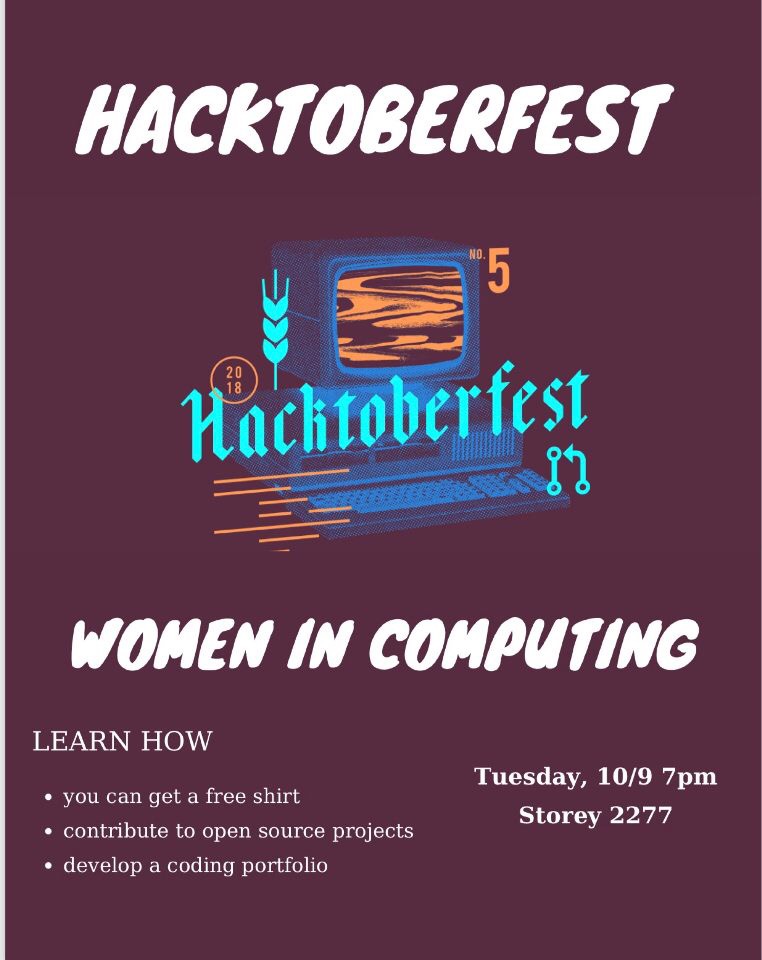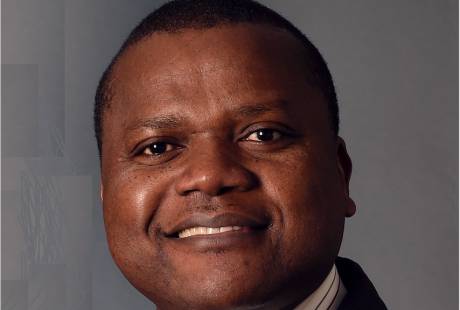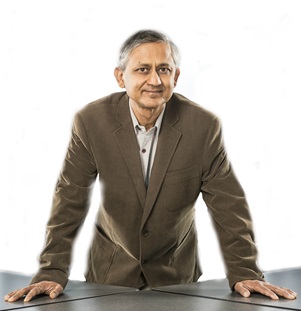Hacktoberfest
- 4 views

 Abstract: Cybersecurity is becoming one of the challenging problems in the connected world because of heterogeneity of networked systems and scale and complexity of cyberspace. Cyber- attacks are not only increasing in terms of numbers but also getting more sophisticated. Cyber- defense for prevention, detection and response to cyber-attacks is an on-going challenge that needs efforts to protect critical infrastructures and private information. Complexity and scale of cyberspace and heterogeneity of networked systems make cybersecurity even more challenging. Almost all organizations are vulnerable to (similar or same) cyber-attacks where information sharing could help prevent future cyber-attacks
This talk presents and evaluates an information sharing framework for cybersecurity with the goal of protecting confidential information and networked infrastructures from future cyber- attacks. The proposed framework leverages the blockchain concept where multiple organizations/agencies participate for information sharing (without violating their privacy) to secure and monitor their cyberspaces. This blockchain based framework is to constantly collect high resolution cyber-attack information across organizational boundaries of which the organizations have no specific knowledge or control over any other organizations' data or damage caused by cyber-attacks.
Bio:
Laurent L. Njilla received his B.S. in Computer Science from the University of Yaoundé 1 in Cameroon, the M.S. in Computer Engineering from the University of Central Florida (UCF) in 2005 and Ph.D. in Electrical Engineering from Florida International University (FIU) in 2015. He joined the Cyber Assurance Branch of the U.S. Air Force Research Laboratory (AFRL), Rome, New York, as a Research Electronics Engineer in 2015. Prior to joining the AFRL, he was a Senior Systems Analyst in the industry sector for more than 10 years. He is responsible for conducting basic research in the areas of hardware design, game theory applied to cyber security and cyber survivability, hardware Security, online social network, cyber threat information sharing, category theory, and blockchain technology. He is the Program Manager for the Cyber Security Center of Excellence (CoE) for the HBCU/MI and the Disruptive Information Technology Program at AFRL/RI. Dr. Njilla’s research has resulted in more than 50 peer-reviewed journal and conference papers and multiple awards including Air Force Notable Achievement Awards, the 2015 FIU World Ahead Graduate award and etc. He is a reviewer of multiple journals and serves on the technical program committees of several international conferences. He is a member of the National Society of Black Engineer (NSBE).
Please see http://www.cse.sc.edu/colloquia for further information on colloquia in the Department of Computer Science and Engineering.
Abstract: Cybersecurity is becoming one of the challenging problems in the connected world because of heterogeneity of networked systems and scale and complexity of cyberspace. Cyber- attacks are not only increasing in terms of numbers but also getting more sophisticated. Cyber- defense for prevention, detection and response to cyber-attacks is an on-going challenge that needs efforts to protect critical infrastructures and private information. Complexity and scale of cyberspace and heterogeneity of networked systems make cybersecurity even more challenging. Almost all organizations are vulnerable to (similar or same) cyber-attacks where information sharing could help prevent future cyber-attacks
This talk presents and evaluates an information sharing framework for cybersecurity with the goal of protecting confidential information and networked infrastructures from future cyber- attacks. The proposed framework leverages the blockchain concept where multiple organizations/agencies participate for information sharing (without violating their privacy) to secure and monitor their cyberspaces. This blockchain based framework is to constantly collect high resolution cyber-attack information across organizational boundaries of which the organizations have no specific knowledge or control over any other organizations' data or damage caused by cyber-attacks.
Bio:
Laurent L. Njilla received his B.S. in Computer Science from the University of Yaoundé 1 in Cameroon, the M.S. in Computer Engineering from the University of Central Florida (UCF) in 2005 and Ph.D. in Electrical Engineering from Florida International University (FIU) in 2015. He joined the Cyber Assurance Branch of the U.S. Air Force Research Laboratory (AFRL), Rome, New York, as a Research Electronics Engineer in 2015. Prior to joining the AFRL, he was a Senior Systems Analyst in the industry sector for more than 10 years. He is responsible for conducting basic research in the areas of hardware design, game theory applied to cyber security and cyber survivability, hardware Security, online social network, cyber threat information sharing, category theory, and blockchain technology. He is the Program Manager for the Cyber Security Center of Excellence (CoE) for the HBCU/MI and the Disruptive Information Technology Program at AFRL/RI. Dr. Njilla’s research has resulted in more than 50 peer-reviewed journal and conference papers and multiple awards including Air Force Notable Achievement Awards, the 2015 FIU World Ahead Graduate award and etc. He is a reviewer of multiple journals and serves on the technical program committees of several international conferences. He is a member of the National Society of Black Engineer (NSBE).
Please see http://www.cse.sc.edu/colloquia for further information on colloquia in the Department of Computer Science and Engineering. Prof. Amit P. Sheth
Abstract: While Bill Gates, Stephen Hawking, Elon Musk, Peter Thiel, and others engage in OpenAI discussions of whether or not AI, robots, and machines will replace humans, proponents of human-centric computing continue to extend work in which humans and machines partner in contextualized and personalized processing of multimodal data to derive actionable information.
This talk describes how maturing towards the emerging paradigms of semantic computing (SC), cognitive computing (CC), and perceptual computing (PC) provides a continuum through which to exploit the ever-increasing and growing diversity of data that could enhance people’s daily lives. SC and CC sift through raw data to personalize it according to context and individual users, creating abstractions that move the data closer to what humans can readily understand and apply in decision-making. PC, which interacts with the surrounding environment to collect data that is relevant and useful in understanding the outside world, is characterized by interpretative and exploratory activities that are supported by the use of prior/background knowledge. Using the examples of personalized digital health and a smart city, we will demonstrate how the trio of these computing paradigms form complementary capabilities that will enable the development of the next generation of intelligent systems. For background: http://bit.ly/PCSComputing.
Biography: Prof. Amit Sheth (http://knoesis.org/amit) is an Educator, Researcher, and Entrepreneur. He is the LexisNexis Ohio Eminent Scholar, a Fellow of both IEEE and AAAI, and the executive director of Kno.e.sis-the Ohio Center of Excellence in Knowledge-enabled Computing at Wright State University. Kno.e.sis has ~75 researchers, including 15 faculty and ~60 funded students. In World Wide Web technology, it is placed among the top 10 universities in the world based on its 10-yr impact. He has founded three companies and continues to advise/direct startups in semantics and healthcare; several commercial products and deployed systems have resulted from his research. Taalee/Semagix, founded in 1999 developed the first knowledge driven semantic search product, similar to the one popularized in 2013 by Google’s knowledge graph enhanced semantic search. He is one of the 100 most cited computer scientists (h-index 98). Some of the recent themes he coined/popularized include smart data (2004), citizen sensing (2008), semantic perception (2008), and continuous semantics (2008). His former students are exceptionally successful as academics in research universities, researchers in industry, and successful entrepreneurs; average citations for his first 18 past PhD students exceed 1,800 (http://j.mp/Kimpact).
Thursday, May 3, 9:30 am – 10:30 am
1400 Storey Innovation Center
Prof. Amit P. Sheth
Abstract: While Bill Gates, Stephen Hawking, Elon Musk, Peter Thiel, and others engage in OpenAI discussions of whether or not AI, robots, and machines will replace humans, proponents of human-centric computing continue to extend work in which humans and machines partner in contextualized and personalized processing of multimodal data to derive actionable information.
This talk describes how maturing towards the emerging paradigms of semantic computing (SC), cognitive computing (CC), and perceptual computing (PC) provides a continuum through which to exploit the ever-increasing and growing diversity of data that could enhance people’s daily lives. SC and CC sift through raw data to personalize it according to context and individual users, creating abstractions that move the data closer to what humans can readily understand and apply in decision-making. PC, which interacts with the surrounding environment to collect data that is relevant and useful in understanding the outside world, is characterized by interpretative and exploratory activities that are supported by the use of prior/background knowledge. Using the examples of personalized digital health and a smart city, we will demonstrate how the trio of these computing paradigms form complementary capabilities that will enable the development of the next generation of intelligent systems. For background: http://bit.ly/PCSComputing.
Biography: Prof. Amit Sheth (http://knoesis.org/amit) is an Educator, Researcher, and Entrepreneur. He is the LexisNexis Ohio Eminent Scholar, a Fellow of both IEEE and AAAI, and the executive director of Kno.e.sis-the Ohio Center of Excellence in Knowledge-enabled Computing at Wright State University. Kno.e.sis has ~75 researchers, including 15 faculty and ~60 funded students. In World Wide Web technology, it is placed among the top 10 universities in the world based on its 10-yr impact. He has founded three companies and continues to advise/direct startups in semantics and healthcare; several commercial products and deployed systems have resulted from his research. Taalee/Semagix, founded in 1999 developed the first knowledge driven semantic search product, similar to the one popularized in 2013 by Google’s knowledge graph enhanced semantic search. He is one of the 100 most cited computer scientists (h-index 98). Some of the recent themes he coined/popularized include smart data (2004), citizen sensing (2008), semantic perception (2008), and continuous semantics (2008). His former students are exceptionally successful as academics in research universities, researchers in industry, and successful entrepreneurs; average citations for his first 18 past PhD students exceed 1,800 (http://j.mp/Kimpact).
Thursday, May 3, 9:30 am – 10:30 am
1400 Storey Innovation Center